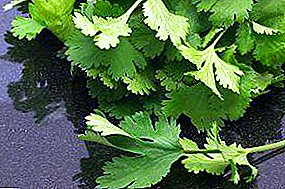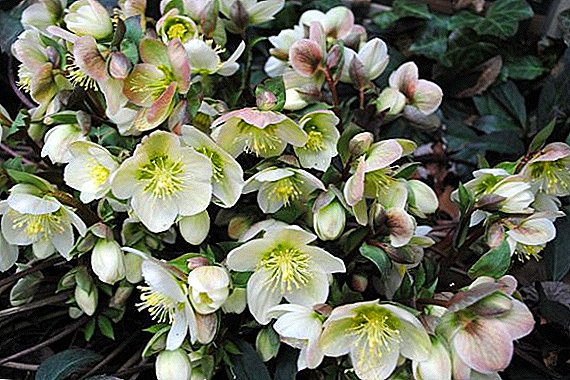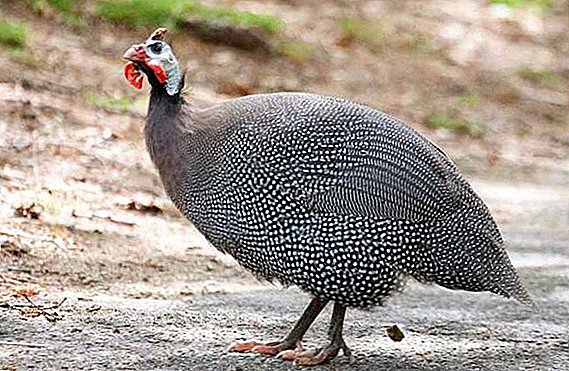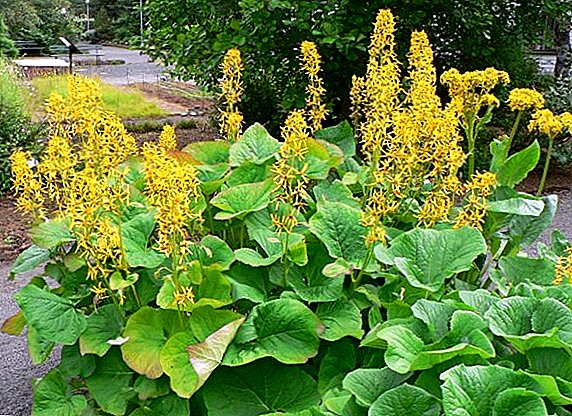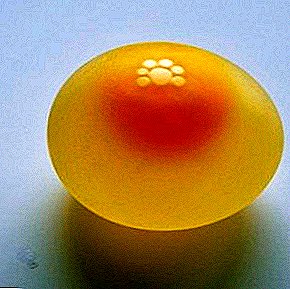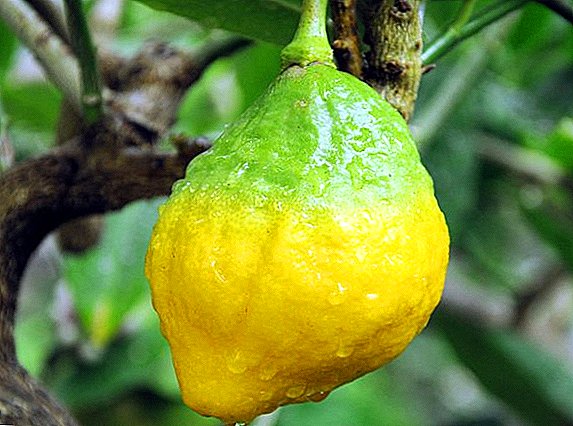 Citron is a rare plant that belongs to the citrus family. In Europe, he came before our era. Mention of this plant can be found in the works of ancient Greek scientists and researchers. It is bred in many countries, but not in industrial quantities.
Citron is a rare plant that belongs to the citrus family. In Europe, he came before our era. Mention of this plant can be found in the works of ancient Greek scientists and researchers. It is bred in many countries, but not in industrial quantities.
It is noteworthy that such a plant as citron, has not found wide application in the food industry. Only a few housewives have in their stock recipes for using it in cooking.
Citron at home is interesting to grow lovers of the exotic. An elegant tree with bizarre fruits will impress fans of curiosities.
Description and characteristics of citron
In nature, citron is a small shrub or tree up to three meters high. The branches have spines of 4-6 cm each. The leaves are oval in shape, oblong, with petioles.
It blooms with white single flowers with a reddish tinge. Its fruits are one of the largest among citrus fruits, their length reaches 15-45 cm. In diameter - up to 30 cm. Fruits are oblong, yellow, less often - orange. 
What is the difference between citron and lemon?
Lemon does not grow in the wild state. It is a cultivated hybrid of citron. The lemon tree differs from the citron tree in height - it can reach eight meters. The leaves are brighter and their smell is richer than that of citron.
Citron fruits are much larger than lemon. Citron fruit has a thick peel, in lemon it is thinner and smoother. Most citron fruits have a pronounced ribbed surface.
Did you know? The taste characteristics of sweet and sour citron have a bitter aftertaste, like grapefruit.
Necessary conditions for growing citron
Before you start growing citron, you need to know that this is the most heat-loving plant of all citrus fruits. In room conditions, it grows to 1-1.5 meters. Therefore, you need to choose a bright and warm place where the citron will grow and, possibly, will give fruit. 
Where is the best place to put citron in the room?
It should be a spacious, well-lit and warm place. The citron in the room can be placed on the windowsill, avoiding the north side. In summer, the sun shines.
In autumn and winter, on the contrary, additional lighting will be needed so that the duration of daylight hours for citron is at least 10 hours per day.
Ordinary fluorescent lamps or phytolamps, which can be purchased at garden stores, are suitable for additional lighting. 
Temperature and humidity for growing
Since citron is a heat-loving plant, the temperature during its cultivation must be maintained within 25-35 degrees in spring and summer, in autumn and winter - no more than 10-15 degrees.
Such temperature conditions are necessary for growing any citrus plant, such as lemon or citron. They provide normal flowering and fruiting.
Important! Any spraying and washing should be carried out with water at room temperature, after allowing it to stand for several days.Humidity should be at 50%. To do this, a pot of citron in the warm period is placed in a pan with water. Every morning and evening you need to spray the leaves.
Once a season, the crown should be washed with warm water. Before washing the ground is covered with polyethylene or other moisture-resistant material to protect it from washing out the soil. 
How to plant citron at home
Citron can only be grown with the help of a cutting, there are few seeds in its fruits, and they are in an immature state, whereas lemon has no such problems. Lemon is easier to be seeded with seeds than citron, but knowing how to plant citron correctly, you will have no difficulty in breeding it.
The stalk is harvested in spring, cutting off a one-year branch with a knife. Length - 10-15 cm. Stalk is freed from leaves, leaving 2-4 shoots at the top.
Important! You should use a sharp knife, as scissors can damage the structure of the citron cutting, which will adversely affect its development and reproduction.
Requirements for growing soil
For normal growth of citron planting cutting should be carried out in a special soil for citrus, purchased in the store. You can prepare the mixture, independently mixing two parts of sand, one part of humus and one part of black soil. Place a drain on the bottom of the pot to prevent stagnant water.  Before planting, wash the cuttings with boiling water for disinfection. After the ground cools, you need to make a hole 2 cm deep and plant a cutting in it. Put the sprout in a bright place with a temperature of 20-25 degrees. To create greenhouse conditions, at the edges, attach a cone to the pot and wrap it in polyethylene, leaving a small hole at the top to moisten and air the germ.
Before planting, wash the cuttings with boiling water for disinfection. After the ground cools, you need to make a hole 2 cm deep and plant a cutting in it. Put the sprout in a bright place with a temperature of 20-25 degrees. To create greenhouse conditions, at the edges, attach a cone to the pot and wrap it in polyethylene, leaving a small hole at the top to moisten and air the germ.
Learn more about citrus plants such as mandarin and calamondin.After 1-2 months, white roots will begin to appear on the handle, this will be a sign that it is time to transplant the plant into large pots. Transplantation is carried out in the same soil as during the initial planting, it is necessary to put drainage on the bottom.
Propagation of citron graft
Citron in room conditions can be propagated by grafting the cutting to any other citrus. The benefits of grafting are that plants grow faster and, when properly grafted, begin to bloom after 2-3 years. Citron can be grafted in two ways: by budding (grafting by the eye) and copulating (grafting by cutting).
For indoor growing, a graft cutting method is suitable. Graft 2-3-year-old cuttings grown at home, the thickness of the trunks should not exceed 10 mm. Cuttings pruned 5-8 cm in height, removing all thorns and leaves, leaving only the kidneys. On the bark of the rootstock, a neat incision is made of a length of 1-2 cm. The bark is carefully moved apart with a knife, the cutting is inserted vertically, along the section on the stock. The vaccination site is tightly wrapped with tape or cotton cloth. Open cut areas need to be treated with garden pitch.
Did you know? Garden var can be prepared at home. To do this, mix the melted paraffin (5-6 parts) with crushed rosin (2-3 parts), bring this mixture to a boil and add mineral oil (2 parts). The mixture is boiled for 10 minutes. Allow to cool and lay out on the banks, tightly closed lids.
For better development, the cutting can be covered with a glass jar or a greenhouse made of polyethylene.
Features care citron at home
When growing citron, it is worth knowing that it needs care and proper care. It is necessary to follow the plant all the time. Regularly and timely water, pick up top dressing of the soil and cut it in time.
Watering
In summer, citron needs to be watered regularly, twice a day. In the fall and spring water as the topsoil dries. If the upper lumps of soil do not stick to hands and crumble, then citron needs to be watered. In winter, watering should be reduced, since citron is at rest, its growth and development are slowed down during this period.  Water should be distilled water at room temperature. If possible, use rainwater or water from natural reservoirs, also settled at room temperature. This water does not contain in its composition chlorine and heavy metals that are harmful to any citrus plants.
Water should be distilled water at room temperature. If possible, use rainwater or water from natural reservoirs, also settled at room temperature. This water does not contain in its composition chlorine and heavy metals that are harmful to any citrus plants.
Important! Water can be boiled before irrigation, it will disinfect it and precipitate heavy metals.
Fertilizer
Citron, like any citrus, needs regular fertilizer.
Citrus fruits are fertilized at least once a week during the plant growth period - from the beginning of March to the end of October. During the winter period it does not need top dressing. Fertilizers must contain nitrogen, phosphorus and potassium, they can be bought at garden stores. Well suited superphosphate or double superphosphate.  At home, you can make fertilizer from horse or cow manure. To do this, dilute one part of the manure with ten parts of water.
At home, you can make fertilizer from horse or cow manure. To do this, dilute one part of the manure with ten parts of water.
Important! Dilute with water you need any fertilizer. This will prevent the rhizome of the plant from burning.A good option would be to add hardwood ash to the upper layers of the soil. The ash is also diluted with water, then it is poured over the soil in a pot.
Pruning
Cut the citron is optional. Pruning room citrus, such as lemon, citron or orange, is carried out to give the tree a certain shape and size.
You will certainly be interested to read about pruning cherries, cherries, plums, pears, grapes.The method of forming a tree in citron is simple: the central shoot is fixed at a height of 15-20 cm. Of the lateral branches, 2-5 branches are evenly spaced on opposite sides. This is called the foreground branches.
On each branch of the first plan leave 2-3 branches of the second plan. On the branches of the second plan - 2-6 branches of the third plan, on which the branches of the fourth plan begin to grow. This can be considered the end of the formation of the tree, on these branches and flowering and fruiting citrus begins. The main goal of pruning is to grow the plant in bulk, and not just pulled up.
Major diseases and pests of citron
The main diseases of citron associated with the problems of caring for him. Yellowed and fallen leaves - insufficient watering or the amount of fertilizer. The leaves withered and twisted - an excess of water in the soil or extra fertilizers that spoiled the root system.
Citron pests rarely attack, but can be brought in from other plants.
- Fungal infections spoil the leaves and fruits, forming warts on them. To combat them, it is necessary to spray the plant Bordeaux mixture or fungicides.
- Viruses infect the bark of the trunk, it begins to flake off. In this case, you should immediately remove the dead bark and treat the infected place with garden pitch.
- Pests for citron are scale, mite and mealybug. At the very beginning of the lesion, they form a white sticky plaque on the leaves. In the future, these leaves dry up and fall off. If plaque is detected, citron should immediately be separated from other plants. Wash all leaves with insecticides, for example "Aktellik".


